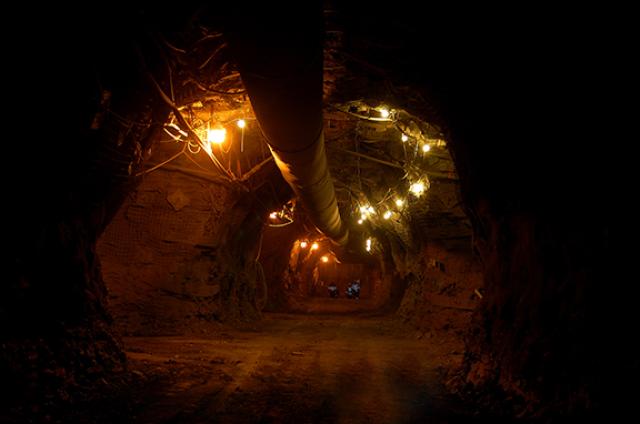
WSP USA has constructed more than 80 hard rock caverns in the U.S. to store propane or butane.
With the burgeoning growth in the production of crude oil and natural gas liquids (NGLs), exports are on the rise. In fact, two big think tanks—RBN Energy (“Let It Flow - The Rise Of U.S. LNG Exports”) and Stratas Advisors (“North American NGL Outlook 2020 – 2040”)—each recently made the same bold statement: All new U.S. crude oil production would have to be exported!
Since then, industry leaders have echoed similar statements regarding natural gas/liquefied natural gas (LNG) space. The industry has been gearing up—the number of NGL treating, pipeline and export-oriented projects are growing dramatically. Development of this high-quality infrastructure isn’t without the need for additional storage (crude, NGL, chemical derivatives), which can mitigate feedstock supply risk, improve pipeline flexibility and reduce ship loading cost.
Underground storage of crude oil and NGLs in salt caverns is common in the U.S. Some of you may recall that salt cavern storage was the subject of a WSP USA article in Industry Voice, “Underground Storage Goes Midstream,” which appeared earlier this year. As Mother Nature would have it, not every region of the U.S. has underground salt storage potential. In areas where this is the reality, WSP geologists, geoscientists and engineers look to a suitable “salt substitute” to provide a viable and appropriate storage solution: Hard rock.
Many regions in the U.S. have underlying blankets of shale and limestone, which are very desirable for mined storage development. Over the past five decades, WSP has constructed more than 80 hard rock caverns in the U.S., storing either propane or butane. Many are already in use worldwide, and more are under construction for crude oil storage.
Proven Technology
The mines used for hydrocarbon storage are unique, and are situated roughly 600 feet below the surface. WSP uses proven geoscience technology to identify formations suitable for creating an underground storage mine.
“We’ve been very successful utilizing igneous, metamorphic, dolomite, limestone and shale formations, and not all of them are suitable,” advised Ron Mart, a lead geologist at WSP. “Once a formation is identified, it is subjected to a rigorous technical evaluation program. Multiple test wells are drilled in order to retrieve rock core for lab analysis and in-situ testing.”

WSP hard rock cavern engineer Frank Jurica agreed. “WSP pressure tests the rock in multiple locations as part of the cavern formation technical evaluation,” he said.
Once the rock is proven and permits are approved for mine construction, WSP mobilizes the cavern engineering and construction teams to develop the mining plans needed to safely carry out the project.
“Our mine engineers carefully lay out the pillar and cut sections, showing the exact locations of the shafts; and then the work of drilling the shafts begins,” Jurica said. “Mucking is the term used to describe the process of bringing the mined material to these drilled shafts during mining operations for removal,” he added.
Storage Cavern Construction
Once the shafts are completed to mine depth and the casings are cemented in place, the next phase of development is to install the mining equipment, including the hoist and skip. When this equipment is ready for operation, the “real” mining begins.
“It’s called break-out mining,” Jurica said. “During break-out mining, the first mine excavations are designed to be big enough to receive the mining equipment.”
Once the mined area is large enough to lower drilling and hauling machines into place, these items are dismantled, lowered down the production shaft piece-by-piece, and assembled at mine depth.
Eventually, there is enough excavated space, downhole equipment and mining personnel to get “production mining” underway. During this phase, most of the mine volume is created, safely and methodically. Mined cavern space created is surveyed utilizing state-of-the-art techniques to monitor throughout production mining. Once the target volume is achieved, the mine can be prepared for storage conversion.
“When we mined the butane cavern in Illinois, we created approximately 1.4 million barrels of volume for butane storage,” Jurica said. “We had numerous industry and government representatives visit the mine while it was in the production phase, which was good.”
Once the mine enters the storage conversion stage, visitors are no longer allowed downhole. At this point, storage infrastructure installation progresses with attention to detail and quality. The wellheads, pumps and cavern monitoring instrumentation are installed in preparation for final pressure testing and commissioning.
WSP has the personnel and experience to create reliable and useful underground storage across North America and around the world. So, you could say that WSP puts the “rock” in hard rock cavern storage!
For more information about WSP, visit our website at www.wsp.com. To learn more about the firm’s hard rock mine projects, go to https://www.wsp.com/en-US/projects/butane-storage-cavern.

